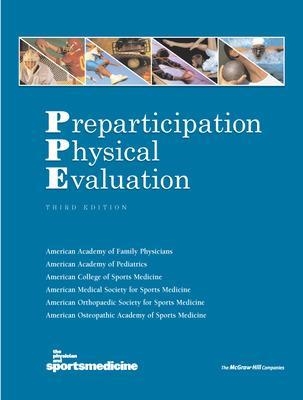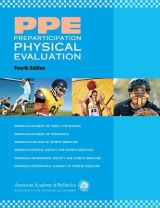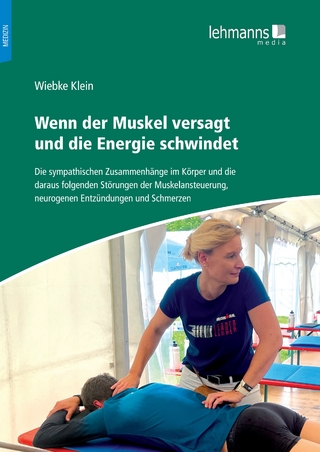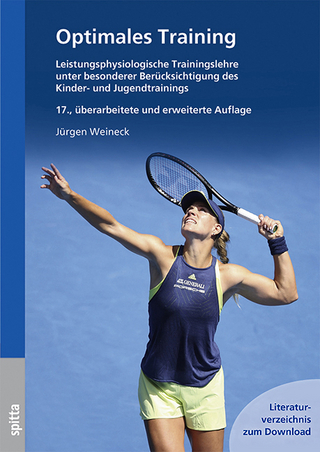
Preparticipation Physical Evaluation
McGraw Hill Higher Education (Verlag)
978-0-07-144636-5 (ISBN)
- Titel erscheint in neuer Auflage
- Artikel merken
More than 12 million preparticipation exams (PPE) are conducted yearly in the USA, most schools require a PPE for athletic clearance, and the PPE form is the gold standard for conducting the exams. Featuring an expert panel of six leading medical societies as authors, this improved and expanded edition includes new full-color diagrams, new chapters on disabled athletes, and a more detailed physical examination section.
Editorial Board: American Academy of Family Physicians American Academy of Pediatrics American College of Sports Medicine American Medical Society for Sports Medicine American Orthopaedic Society for Sports Medicine American Osteopathic Academy of Sports Medicine
Chapter 1: IntroductionOverviewReferencesChapter 2: Goals and ObjectivesOverviewTABLE 1. Objectives of the PPEPrimary objectivesSecondary objectivesReferencesChapter 3: Timing, Setting, and StructureOverviewQualifications of the examinersTABLE 2. Elements of a coordinated medical evaluationTiming of the evaluationFrequency of the evaluationMethods and setting of evaluationsTABLE 3. Tips to improve the coordinated medical team approach to PPEsInterim annual evaluationsRoutine screening testsReferencesChapter 4: Administrative and Legal ConcernsOverviewRight to participateSexual harassment claimsSIDEBAR: Legal ramifications of the exam settingGood Samaritan statutesHIPPA and FERPA regulationsCompetitions for the physically or cognitively impairedReferencesChapter 5: The PPE Medical HistoryOverviewMedical historyMedications and supplementsAllergies and anaphylaxisCardiovascular problemsTABLE 4. Conditions causing increased risk for sudden cardiac death in young athletesTABLE 5. Noninvasive cardiac screening testsTABLE 6. Physical stigmata of Marfan syndromeSurgical historyMusculoskeletal injuryPaired organsViral illnessDermatologic conditionsNeurologic conditionsTABLE 7. Classification of exercise-related headachesHeat illnessTABLE 8. Factors in heat-related illnessTABLE 9. Factors in heat-related illness AsthmaTABLE 10. Spirometric parameters for diagnosing exercise-induced asthma and establishing reversibility after pharmacotherapySickle cell trait or diseaseEyes and visionNutritional concernsMental healthMenstrual historyImmunizationsTABLE 11. Recommended immunizations for adolescent and adult athletesTABLE 12. Recommended vaccinations for international travelersQuestions that may be prompts during the physical examinationTABLE 13. World Anti-Doping Agency prohibited classes of substancesReferencesChapter 6: The PPE Physical ExaminationOverviewTABLE 13. Standard components of the preparticipation physical examinationHeight and weightSIDEBAR: What is the body mass index?TABLE A. BMI-for-age categories for those 2 to 20 years oldHead, eyes, ears, nose, and throatCardiovascular systemTABLE 14. Classification of hypertension in children and adolescentsTABLE 15. Classification of hypertension in adultsTABLE 16. Accuracy of dynamic auscultationTABLE 17. Precision of the cardiac examination of systolic murmursTABLE 18. Auscultation of cardiac murmursLungsAbdomenGenitaliaSkinMusculosketal systemFIGURE 1. The general screening examinationFIGURES 2-9. The joint-specific musculoskeletal examinationNeurologic systemReferencesChapter 7: Determining ClearanceOverviewClearance considerations and formsTABLE 19. Classification of sports by contactTABLE 20. Classification of sports by strenuousnessTABLE 21. Medical conditions and sports participationMedication and supplement useAcute illnessBloodborne pathogens: HIV and hepatitisCardiovascular abnormalitiesDermatologic disordersDiabetes mellitusDisordered eating and the female athlete triadEye disorders and abnormal visionTABLE 22. Categories of sports-related eye-injury risk to the unprotected playerTABLE 23. Recommended eye protectors for selected sportsGynecologic disorders and pregnancyHeat illness (recurrent)Hepatomegaly and dplenomegalyInguinal herniaKidney abnormalitiesMusculoskeletal disordersNeurologic disordersObesityPhysical maturity statusPulmonary disordersTesticular disordersReferencesChapter 8: The Athlete With Special NeedsOverviewBenefits of sportsTABLE 24. Benefits of sports participation unique to those with special needs PPE for special needsMethods of evaluationThe PPE medical historyThe PPE physical examinationTABLE 25. Common findings on physical exam for athletes with special needsFunctional assessmentDiagnostic imagingDetermining clearanceReferencesChapter 9: Future Considerations for Preparticipation ExamsOverviewKey directionsElectronic opportunitiesElectronic PPE pilot projectPaper-to-electronic approachConsiderations for electronic implementationTABLE 26. Advantages and disadvantages of electronic handling of athletic health informationSummaryReferencesChapter 10: ConclusionForms History formPhysical exam formClearance formAppendicesAPPENDIX 1. Sample consent formAPPENDIX 2. The "teen screen"APPENDIX 3. Growth charts showing BMI-for-age for those age 2 to 20 years old
| Erscheint lt. Verlag | 1.12.2004 |
|---|---|
| Verlagsort | London |
| Sprache | englisch |
| Maße | 208 x 279 mm |
| Gewicht | 444 g |
| Themenwelt | Medizin / Pharmazie ► Medizinische Fachgebiete ► Sportmedizin |
| ISBN-10 | 0-07-144636-2 / 0071446362 |
| ISBN-13 | 978-0-07-144636-5 / 9780071446365 |
| Zustand | Neuware |
| Haben Sie eine Frage zum Produkt? |
aus dem Bereich



